What were you watching in 2012? The Anime UK News writers reminisce about their favourite anime from a decade ago
2012 – a world away from 2002 for the UK anime fan! New TV anime shows available to view on streaming on Crunchyroll, R2 DVDs and Blu-rays available to buy from high street stores and via the internet – and online sites where we could meet up to discuss what we’d been watching (like Anime UK News). December 2012 also saw the launch of Anime Limited/All the Anime. Nevertheless, as the writers at Anime UK News have been remembering when looking back, the exciting range of titles that were released in Japan (and available to view via streaming) mostly didn’t match what was actually available to buy in the UK on R2, and even though MVM and Manga were bringing out physical releases, our choices were still quite limited.
Ian Wolf
There are plenty of anime released in 2012 that are of interest: Mamoru Hosoda’s film Wolf Children; sports series Kuroko’s Basketball debuted in 2012, as did the quirky romcom Mysterious Girlfriend X, jazz anime Kids on the Slope, pastel-coloured post-apocalyptic comedy Humanity Has Declined, sci-fi BL OVA Ai no Kusabi (the remake), and alternative history series Girls und Panzer, one of the few anime to release a later OVA that references Monty Python (see a scene in which they sing the Spam song, only for it to be censored due to Japanese product placement laws).
However, out of all the series that were released, the title that stands out the most to me is the one that started a trend in anime that has been with us for the past ten years, for better or worse. It is also one that is getting its fans excited this year. That is because on 6th November 2022, a certain video game is due to be released: Sword Art Online.

Yes, 2012 was the year in which the anime version of Reki Kawahara’s light novel first debuted and, as a result, is arguably the cause of the modern isekai boom. Of course, it wasn’t the first isekai, with mainly series we would now label isekai being around in the early to mid-1990s. These series were aimed at a “shojo” female demographic, including titles like Magic Knight Rayearth, Escaflowne, Fushigi Yugi and InuYasha. The more shonen-focused SAO targeted the male demographic, which has seemingly gained more attention, and indeed has spawned so many more isekai that this genre has become dominant in the anime world. This in turn has led to backlashes from those complaining of isekai saturation, and various parodies of the genre.
Arguably SAO differs from many other isekai airing now. For example, while many series tend to go with reincarnation after death (usually thanks to a visit from Truck-kun) as the preferred method of arrival into another world, in SAO central character Kirito is one of 10,000 players of a new virtual reality game who find themselves trapped inside their virtual world, and if they are killed in the game, they are killed in real-life as their headsets will microwave their brains.
Not all are taken with SAO, with many critical of Kawahara’s writing. Indeed, there are some overly-sentimental moments that are just laughable. Also, in the early series Kawahara’s villains were all too simplistic with no back story. These villains were usually lecherous, often attempting to rape female characters only to be stopped by Kirito in the nick of time. While this hero knight coming to save the damsel-in-distress trope does tire at times, Kirito himself is still an entertaining lead, with love interest Asuna providing her fair share of action too. Kawahara however has reportedly taken this criticism on board and is trying to improve his writing.
It should also be said that SAO was not the only series by Kawahara to be adapted into an anime in 2012, with Accel World, another series featuring characters getting involved in a virtual world, also being made for TV, but this never gained the same level of popularity as SAO did.
Rui
We wrote about the shows we were watching back in 2002 a few days ago, and one of the common threads was that we only got to see most of them several years after they made their debuts thanks to the logistics of anime distribution back then. What a difference a decade made! By 2012 the lion’s share of popular anime titles were finally making their way to legal UK streaming through Crunchyroll. We got to see famous titles in sync with Japan alongside more niche shows like the excellent Natsuyuki Rendezvous. There were some notable omissions – it took a little longer for the still-running reboot of JoJo’s Bizarre Adventure to remember the UK existed, which was a shame – but for the most part, 2012 was a fantastic year in anime.
I’ve chosen an eccentric pair of shows which couldn’t be any more different from one another this time. The first is Utakoi (Chouyaku Hyakunin Isshu: Utakoi), a rare adaptation of a josei manga about famous historical figures in the Heian court. The series was quietly removed from Crunchyroll with little fanfare and has been ignored by English language licensors in both anime and manga form, so my memories of it are as ephemeral as the passionate romances which fizzle out over the course of its run.
The series isn’t billed as being historically accurate but where it may gloss over the politics and struggles of the time, the romantic themes are universal and famous waka poems are used as inspiration for each of the short stories, which focus on several different couples like a decadent, more mature version of Tsuredure Children. In choosing to explore the humanity of each character rather than sticking rigidly to established folklore, creator Kei Sugita manages to depict the complicated world of courtly intrigue more than a thousand years ago in a way that resonates with readers just as well as a glossy modern drama, only draped in sumptuous fabrics. Utakoi would have worked just as well as a live action series but I have a soft spot for the colourful designs and music, and would love to see a company like Discotek pick it up one day.
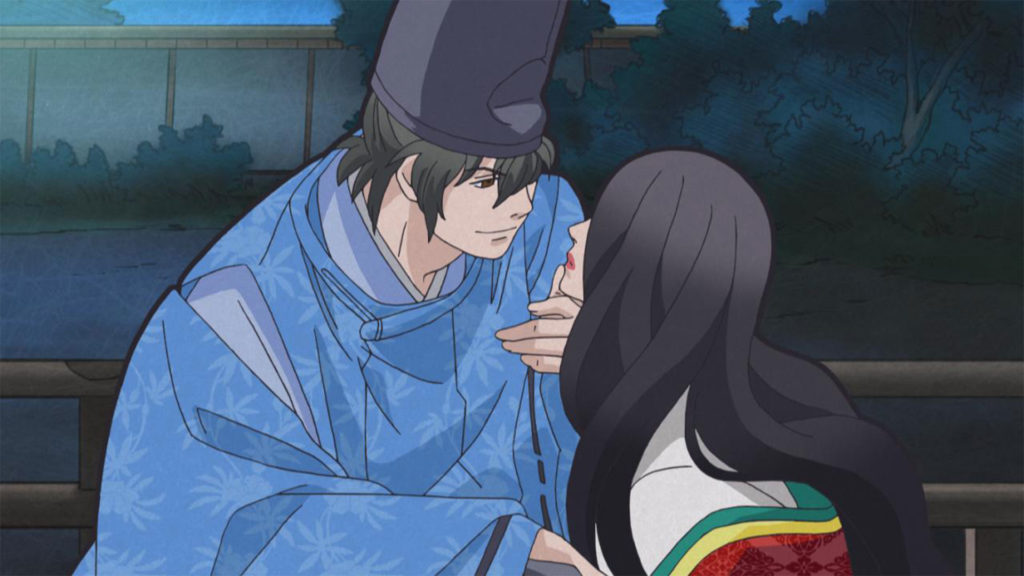
My second pick is another title that has been passed over by licensors, though at least this one is still available on Crunchyroll. Ixion Saga DT is yet another isekai series about a teen boy who gets trapped inside a typical fantasy RPG game. It aired at the same time as Sword Art Online, a bold move given that series’ overwhelming popularity, but of the two it was Capcom’s madcap send-up of the genre which had me looking forward to every new episode the most.
Unlike most series of its genre, Ixion Saga DT was actually based on an obscure, Japan-only, now-defunct online game rather than a manga or light novel about a fictitious game world, but absolutely no familiarity with the source material is required to enjoy this over-the-top, thoroughly offensive parody, which owes more to 90s anime tropes than its generic source material. The characters are exaggerated versions of all of the classic fantasy archetypes, voiced by some of the best voice actors in the business, and the villains are charmingly useless in the tradition of Team Rocket and other old favourites. The opening proudly belts out every possible suggestive pun about the series’ title imaginable while the endings lewdly celebrate the hapless villain’s physical misfortune. The humour which runs through every episode is absolutely puerile – think vintage Gintama mixed with classic Satoru Akahori shows like Sorcerer Hunters – with inappropriate sex jokes littering every single episode. It’s crass, it’s insensitive, and yet somehow it’s compelling viewing. I would buy a UK release in a heartbeat.
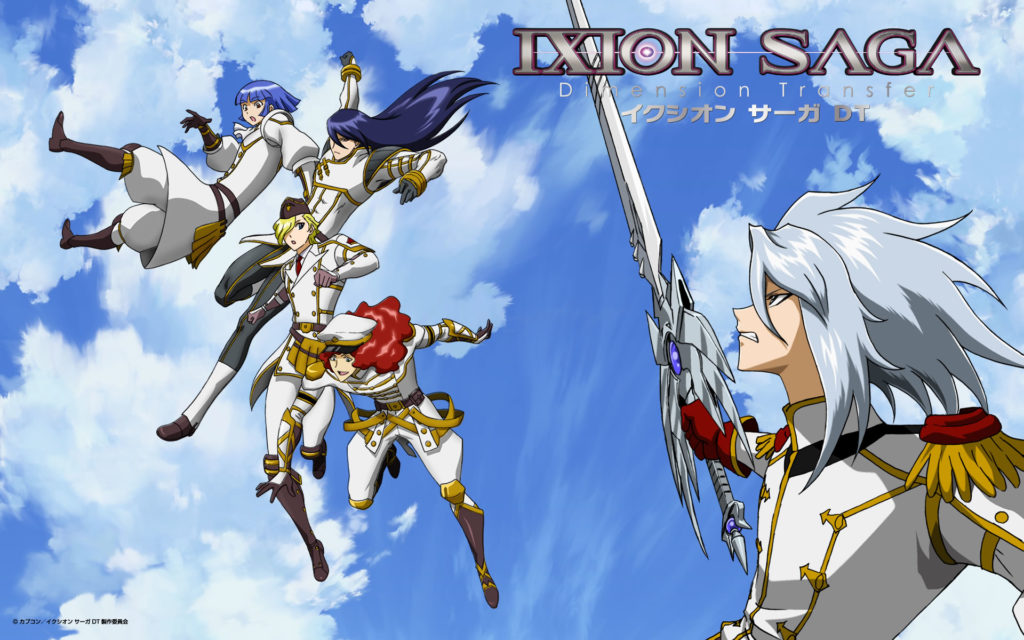
Demelza
2012 was the year that I earnestly started watching simulcast anime on Crunchyroll. Up until then, I’d largely only seen popular shows that were lucky enough to have a home video release so this broadened my horizons a great deal. As it turns out, 2012 also became one of my favourite years for new anime as I fell in love with titles like Humanity has Declined, Kokoro Connect, Hyouka, Sword Art Online, Kids on the Slope and Tari Tari (which cemented a love for P.A Works anime, despite being a subpar show). So when it came to making my choices for this article I struggled with it a great deal since so many of these shows still mean a great deal to me. Hyouka seemed like a shoo-in, but I’ve talked at length about the series before when it received a Blu-ray release across 2017-2018. In some ways that proved a blessing because the two I have managed to narrow it down to both deserve a shoutout for the many who may have passed them by back in 2012.
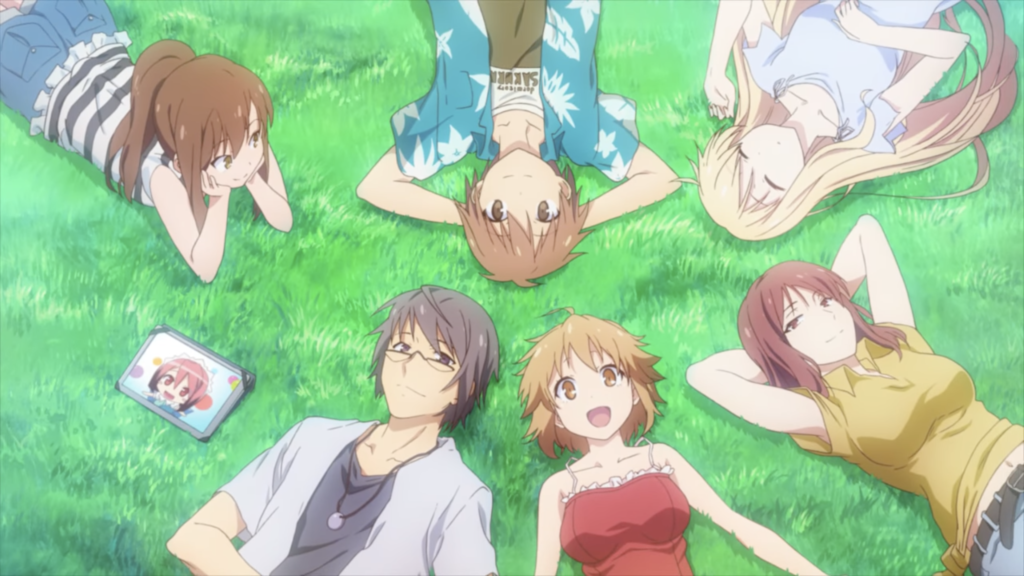
My first pick is The Pet Girl of Sakurasou, which is a 24-episode series adapted by J.C Staff. I’ve written about this series before – most recently with the release of Rascal Does Not Dream of Bunny Girl Senpai which is a newer series by light novel author Hajime Kamoshida. Pet Girl follows the story of Sorata Kanda, who gets kicked out of his high school dorm for rescuing stray cats and is sent to the Sakurasou dorm until he can rehome them all. This dorm is known for being a collection of problem children, which only gets worse when genius artist Mashiro Shiina joins them there. Being the newbie, Sorata ends up in charge of looking after Shiina and his days are quickly filled with all kinds of mischief and mayhem, while his goal of going back to the regular dorms continues to get further and further away.
On the surface, The Pet Girl of Sakurasou was a ridiculous romantic comedy series, but underneath it had a clear message it wanted to convey. Everyone in this dorm had a dream they were chasing after: be it working in anime, becoming a scriptwriter, a manga artist, a voice actor or, in Sorata’s case, working in the video game industry. They’re creative industries that are incredibly difficult to break into if you don’t have the talent or strength of will to push endlessly toward them and this series was happy to show us the highs and lows of reaching for such lofty dreams. As a 17-year-old at the time myself, I found it easy to relate to the struggles of the cast. Not just because of how they struggled to find their place in the world, but also how difficult it was to chase their desires, even if they did know what they wanted to do. I completely fell in love with the show, appreciating how it cleverly melded together the crazy antics of the cast along with the more realistic and sombre emotional beats. To this day it is still one of my all-time favourite shows and I’m disappointed it never received a home video release here (although it can still be streamed on Crunchyroll and HIDIVE). It did recently get a rerelease in America with a dub, so I’m hoping that eventually makes its way over to us.

My second choice is Dusk Maiden of Amnesia, adapted by Silver Link, which follows Teiichi Niiya, a first-year middle-school student at Seikyou Private Academy. There he meets Yuuko Kanoe, a ghost who has taken a liking to him and wishes to find out how she died. Teiichi joins the Paranormal Investigation Club in a bid to find out more about his new friend, where he’s joined by Momoe Okonogi and Kirie Kanoe who is Yuuko’s grandniece and is the only person besides Teiichi who can see Yuuko. While the series started off as a comedy, it quickly grew more serious as Yuuko’s past was revealed and led to two extremely emotional episodes toward the end of the series. Despite the fact the story diverted somewhat from the original source material, I enjoyed what Silver Link did with the series and all these years later I still think about it fondly. Although be warned that it’s certainly not for the faint-hearted; it’s a very creepy series at times!
There were plenty of plot inconsistencies earlier on and elements that weren’t fully fleshed out, but I think the strengths of the show easily overcame those small issues. The animation in particular was fantastic at setting a creepy tone for the story and heightening the emotions on display. This was actually the first show I ever watched by Silver Link (although Kokoro Connect aired not long after) and just like Tari Tari and P.A Works, it give birth to a deep fondness for the studio and the works that came after. Just like The Pet Girl of Sakurasou, this series has had a troubled time when it comes to home video. It was only released on DVD by MVM in 2014 and can now only be streamed on HIDIVE. Although there is some hope for it as, just like The Pet Girl of Sakurasou, Sentai did rerelease the series on Blu-ray last year so perhaps that will make its way to the UK eventually.
Sarah
Looking back to 2012, I find that there’s a significant divide between the R2 physical releases that I was reviewing in the year itself such as Bleach, and oh, a new fantasy series called Fairy Tail – and the titles that were released in Japan but I didn’t get the chance to review till later (because UK) including Magi; Bodacious Space Pirates; and Psycho-Pass; Eureka Seven: AO. (Most of those reviews can still be read on this site although many no longer have the original screenshots…) So this is a great chance for me to enthuse about a series I love from 2012 that I didn’t review!

Kids on the Slope was a must-watch for me on Crunchyroll (it’s still there now) given that it boasts a jazz-infused score by Yoko Kanno! Luckily, the story (based on a josei manga by Yuki Kodama) was skilfully brought to the screen by director Shinichiro Watanabe at MAPPA (with Tezuka Productions). It’s about three high school students: gifted but uptight classical pianist Kaoru Nishimi who meets (when he has to change schools for the nth time) Sentaro Kawabuchi, and the girl they (inevitably) both are attracted to, Ritsuko Mukae, whose family just happens to own a record shop. Sen gives off major delinquent vibes but turns out to be a brilliant drummer. The story’s set in the 60s, a time when Japan was emerging from the post-war slump and fast becoming an economic success – and it’s when Sentaro introduces Kaoru to American jazz that the real breakthrough happens. Kaoru discovers a gift he didn’t know he possessed: jazz allows him to improvise! The young men set up a group together, bringing in a student trumpeter, Junichi (Ritsuko’s father plays bass) – but problems in the young musicians’ lives erupt and threaten to destroy both the group and the friendships sustaining it.
Yoko Kanno did a great deal of research into the jazz standards she used in the series (Moanin’, Lullaby of Birdland, But Not For Me etc.) composed by greats such as Duke Ellington, George Shearing, George Gershwin and many others. as well as creating the original soundtrack and OP. The retro jazz theme shows through in the titles of all twelve episodes, but even if you feel ambivalent toward this style of music, it’s a compelling piece of drama (as you’d expect from Watanabe). The way the characters communicate on a completely different level through improvising is brilliantly conveyed via the animation and sweeps the viewer along.
Re-watching this after so long reminds me that it’s still – with a few reservations about some plot choices – a moving and inspiring anime.
Onosume

While I didn’t actually watch it in 2012, 2022 marks the tenth anniversary of my personal Greatest Of All Time: Aikatsu!. Running through several generations to follow its companion arcade game, each series in the franchise generally follows a select group of idols who train and compete against each other to become the top idol, forming friendships and rivalries along the way.

While many of you will know its siblings Love Live! and The Idolmaster, Aikatsu! often gets overlooked thanks in part due to its poor availability outside of Japan. The first 25 episodes would later appear on the ill-fated Daisuki streaming service for a while, and Bandai Namco Pictures frequently makes select episodes available on their YouTube channel or via Twitcasting, but sadly, to see the lot, you have no other choice but to import the Japanese Blu-rays.
It’s a shame really, as while it’s easy to write it off as a show for kids, it is in places arguably better than Bandai Namco’s other idol franchises, with some brilliant writing and a fantastic cast of larger-than-life characters that will either have you grinning from ear to ear from their daft antics or crying uncontrollably for half an hour because they’ve just pulled off the performance of their life. Chopping down a Christmas tree? Yep, that’s Aikatsu. Climbing a mountain to see a fashion designer instead of using the lift? Yep, that’s Aikatsu. Turning a rice scoop into a mic? Yep, that’s Aikatsu!
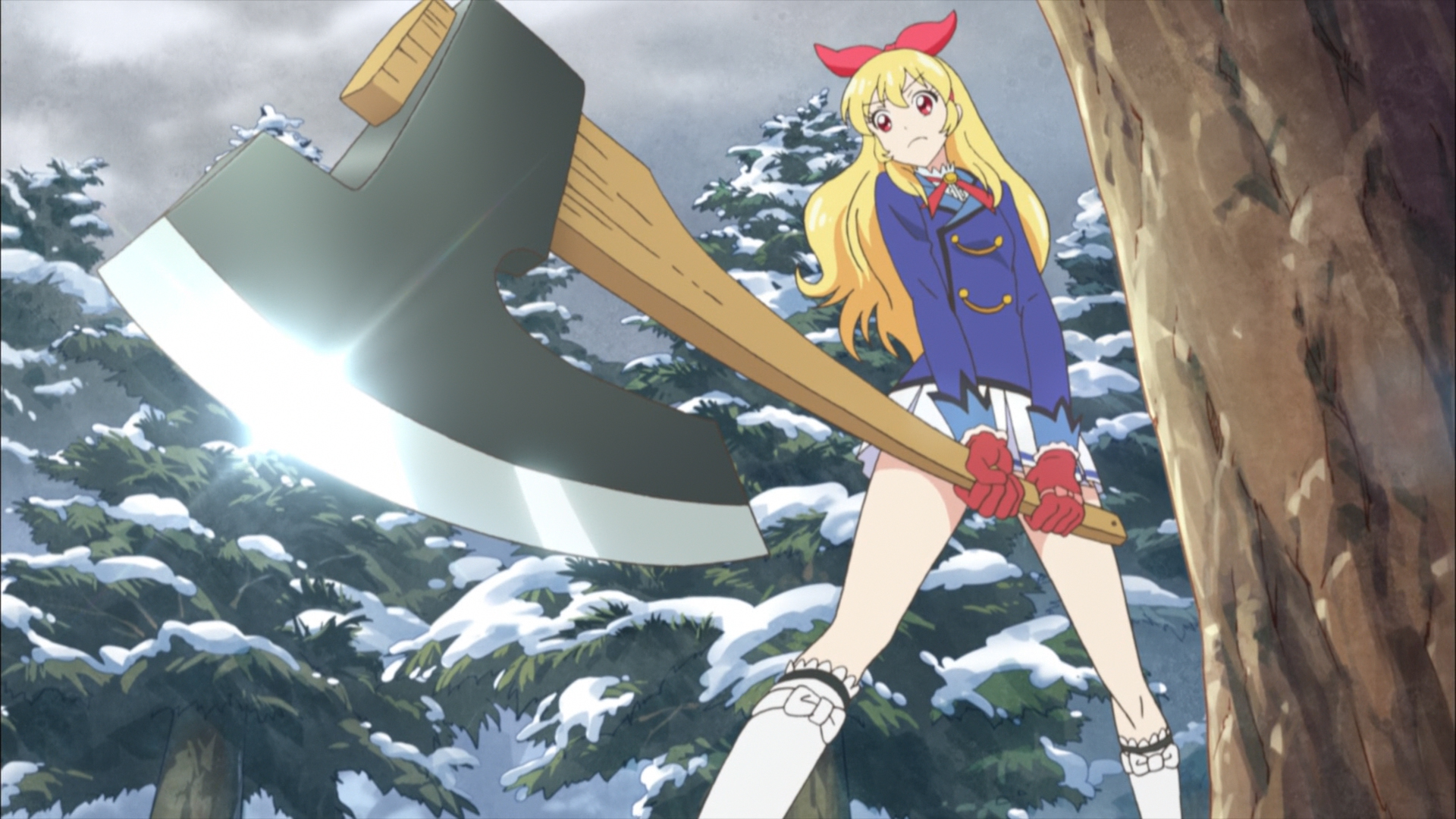
As you can tell, it often operates as a goofy slice-of-life comedy, which marks it out against those other idol shows that try to play things a bit more seriously. Yet that’s not to say it can’t do the serious idol stuff either, as the franchise has seen some absolutely titanic battles and beautiful moments in its CGI song-and-dance sequences. There’s the climactic battle between protagonist Ichigo and top idol Mizuki in Season 1, the rise of Akari to Starlight Queen in Season 4, the fight between Yume and Elza Forte for the Sun Dress in the second season of Aikatsu Stars! and Pure Palette vs Love Me Tear in Aikatsu Friends!. It hasn’t been all plain sailing, mind you. The early CGI was awful (but thankfully steadily improved over time), and the anime side of the franchise has been heavily impacted by the arcade game and its battle with the Pretty franchise (Pretty Rhythm, PriPara, PriChan, PriMagi) where struggling sales have caused later series to seemingly be cut short in terms of scope and be constantly rebooted in an endless cycle to recapture the audience that enjoyed the original generation.
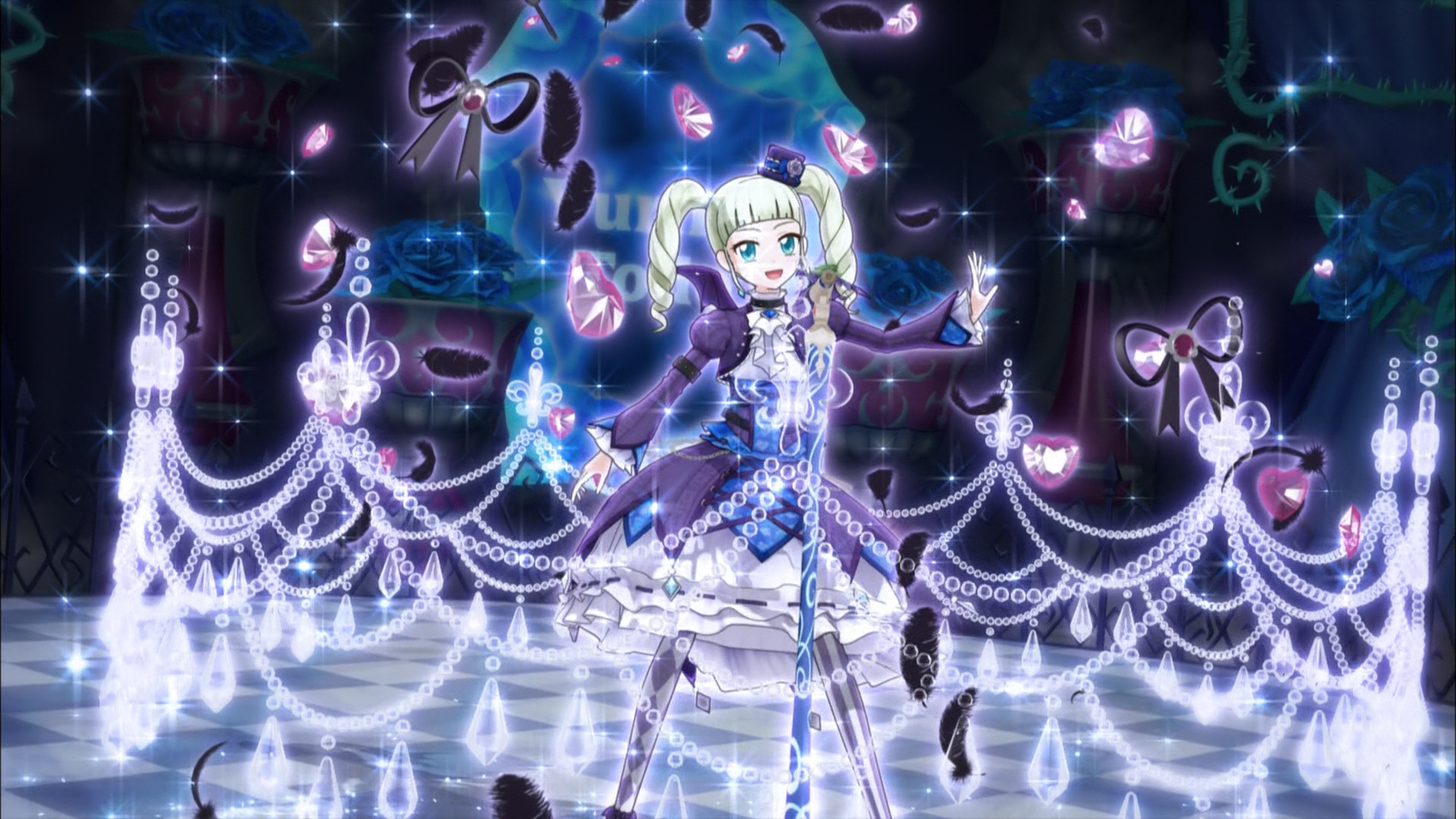
It’s the fantastic music that really captured my heart though, provided by the various idol groups that have supported the franchise through the years, from STAR☆ANIS to STARRY PLANET☆. Filled with bangers from the likes of “Calendar Girl” to “GLASS DOLL” and “Kira・pata・shining” to “Episode Solo”, the series has something for everyone no matter if you’re into pop, dance or even gothic metal, and even though it is idol music at the end of the day, there’s enough quality in here to give more established groups a run for their money.
That then, is Aikatsu!, a long running idol franchise tied to an arcade game meant for kids, but one that has so much energy and charm that it can’t help but capture your heart. If you do get the chance to catch any of it then I’d highly recommend giving it a go, as I think you’ll be pleasantly surprised.
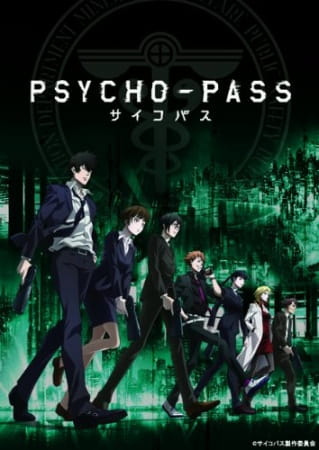
A series that I did actually watch in 2012 though is Psycho-Pass. Written by Gen Urobuchi and animated by Production I.G., the show is heavily inspired by the studio’s previous work on Ghost in the Shell as well as popular movies such as Blade Runner and Minority Report, featuring a cyberpunk dystopian version of Japan where people’s potential to commit crime is measured and given a value known as a Crime Coefficient. While people with low Crime Coefficients can go around their daily lives as normal, those that exceed the threshold for what is considered “normal” are hunted down by the authorities, and either captured and imprisoned or eliminated.
While the show has gone on to spawn multiple seasons following different sets of characters, I still regard the first as the best, with a brilliantly written dark and edgy story that follows newbie Inspector Akane Tsunemori as she is tasked with a variety of difference cases to apprehend people with high crime coefficients (and worse!) while unravelling the truth behind Sibyl, the computer system that is the foundation of this dystopian world.

While the inspirations are clear to see on the surface, I do think that they were able to do something fresh with a genre they know very well. While Ghost in the Shell is more conceptually based around existential ideas, Psycho-Pass is focused more on the makeup of society, the impact of a totalitarian police state, and philosophical ideas around crime and punishment. As a result, it gets to work with darker storylines as it tries to get into the heads of criminals and why people commit crimes and ultimately delivers some very hard-hitting scenes. I was also impressed by the strong visuals and animation, as well as the absolute banging soundtrack by Yugo Kanno, plus ending themes by EGOIST, the virtual singer I was really into at the time, formed by ryo from Supercell and vocalist chelly originally set up for Guilty Crown.
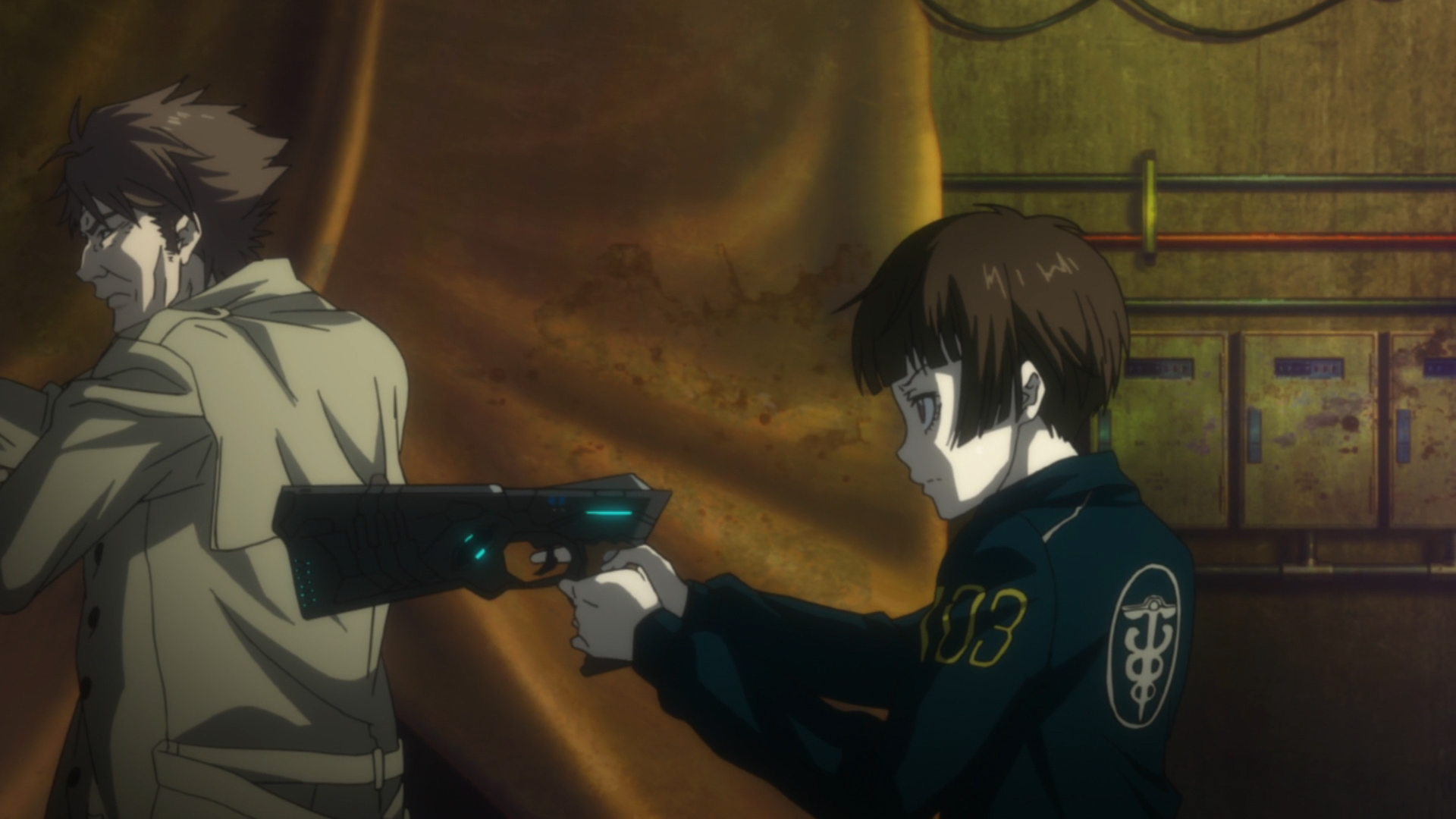
If you do like your dystopian science fiction and somehow haven’t seen this one yet, then I’d highly recommend taking a look at it as it’s a pretty thrilling ride. The show is available on Blu-ray (Season 1 was released by Manga UK back in 2014, while the rest up to the Sinners of the System movies are available from Anime Limited) and is available via streaming on Funimation (up to Season 2) and Amazon Prime (Season 3 and First Inspector).
Cold Cobra
2012 was a good year for anime, as my fellow writers have already mentioned. Given I was 27/28 my life wasn’t that dramatically different compared to now (I’d put “unlike 2002” but that line would only make more sense had I had the time to contribute to the 2002 article…) but I remember the Crunchyroll PS3 app launched that year, allowing me to watch new episodes of my favourite shows on my TV without having to faff around with HDMI cables, so I was thrilled with that… when it worked properly, anyway. Psycho-Pass is the show that sticks out the most to me, it’s first season is a flat-out all-time classic in my eyes, but as that’s already been covered and covered, well, I’ll stop there. Along with Jump! adaptations like Bleach and Naruto (Shippuden) still airing weekly, Shonen Jump stalwart JoJo’s Bizarre Adventure began being properly adapted and launched its first season. Even though, sadly, it didn’t land in the UK until the run-up to the second season two years later, I still feel like mentioning it.
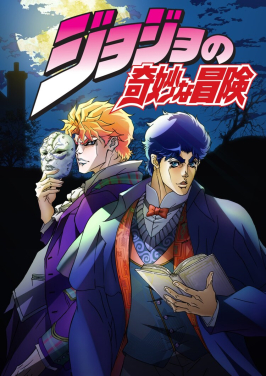
David Productions resisted the urge to jump straight to the more popular and influential Chapter 3: Stardust Crusaders and adapted the shaky first story and its follow-up and did it with flair and style. Part 1: Phantom Blood sees Jonathan Joestar get a new adopted brother in Dio and end up in a weird vampire plot that frankly is not very well written, but thankfully Part 2: Battle Tendency is a lot more fun, focusing on Joseph Joestar and going a bit more bonkers with the plot. Neither parts feature the Stands that the series has since become known for so, as I said, I was pleasantly surprised to see them start at the very beginning. Given their latest JoJo adaptation aired a short while ago, it’s safe to say they did a good job. Amusingly, a few months ago, I got a notification that someone replied to a post I made on a YouTube teaser trailer for the first JoJo’s series back in July 2012, where I wrote “I would hope they do 1-6. At least they’re all in the one flowing timeline. Either way, I’m happy it’s finally happening though!”, the reply asking if I was “smiling now”. Well, yes I am…
The other series I want to briefly touch on is one that doesn’t actually hold any kind of loving place in my heart but is a series that jumped out at me when scanning down the 2012 list, and that’s “K”.

It’s another series I didn’t watch actually IN 2012 but I remember a debate about the show erupting on our very own Anime UK News forums based around how beautiful the animation was (and it was, well, still is!) but how lacking in character development/story the show was. It led to a full-on back-and-forth argument on whether it’s okay to like a show in a “shut your brain off and enjoy the visuals” way or not, and I was very much on the side of defending it based solely on some no doubt low-quality YouTube clips. Now given my love of the shonen genre, standing up for shows just being fun without needing to be deep shouldn’t shock anyone, but for the longest time that’s all I associated K with so I didn’t actually end up watching it until a few years ago. Sure enough, it was flashy but without much depth, they weren’t wrong, yet it was still fun… in small doses. Ironically, had I watched it in 2012 I’d probably have loved it more than when I watched it in my mid-30s, but there you go. Simulcasting was a different beast back then…

